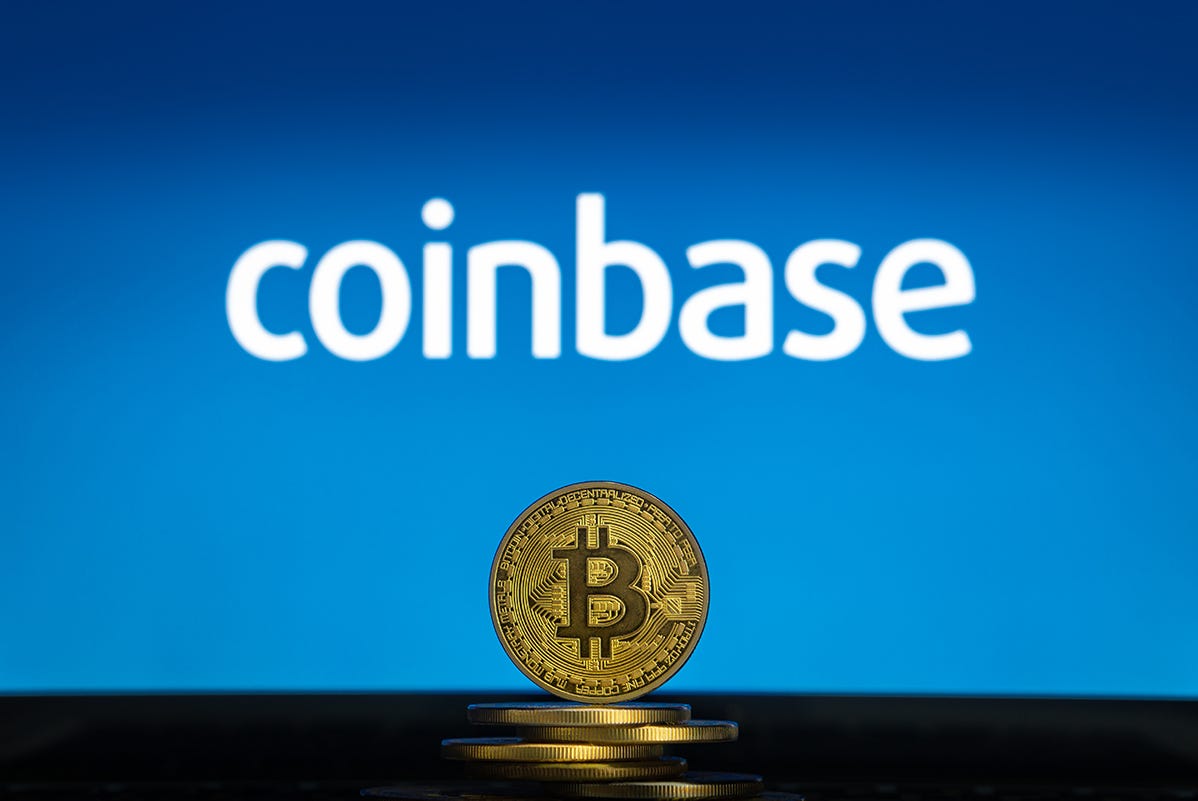Marketing BS: Coinbase and Mission-Based Companies
Good morning everyone,
Apologies for the podcast transcript that went out on Friday. You will receive it again on Wednesday along with the audio.
Today is the last “free” issue of the Marketing BS essay; the Monday morning emails will move into the premium plan on October 19 (just in time for my birthday). Premium subscribers will receive the weekly essay, the weekly briefing, and the two-part podcast. Free subscribers will receive an email on Fridays that includes one piece of content from the week.
THANK YOU to everyone who bought a premium subscription so far!
As a special introductory offer for current Marketing BS readers, you can subscribe for 50% off until October 16.
—Edward

Marketing to Employees
In July 2019, I published an essay titled Marketing to Employees. Over the last year and a half, I have continued to develop my central argument that a company’s consumers don't care about the company’s moral stances, but a company’s employees DO care — a lot.
Recently, the concept of marketing to employees has emerged in the mainstream media, especially for tech companies.
For most businesses, recruiting and retaining high-caliber employees is incredibly important. What’s the most straightforward way to attract top talent? Pay top dollar. But there’s another option that doesn’t involve compensation: companies can project a clear “mission.” In doing so, companies can draw a subset of potential employees who are willing to accept a discount for the “privilege” of working toward the mission.
As companies grow in size, so do their recruiting efforts. As such, they usually rely on a combination of competitive salary and clear mission. Most missions espouse some variation of “be good,” where good is usually implied to represent values that align with the social norms of their workforce. Young, urban-dwelling, college-educated professionals tend to identify as politically progressive; that’s why you generally see companies back left-leaning causes rather than right-leaning ones.
In 2020, many large tech companies have experienced challenges for not being mission-focused enough. Amazon, Facebook, and Google have faced employee dissent for some of their company-wide choices (e.g., working with ICE or the Department of Defense, not investing enough in climate change, or not censoring right-wing politicians).
But not every employee is equally productive. Some highly skilled employees spend their time promoting workplace activism instead of performing their core workplace duties. You generally DON'T want those types of employees — their output is (likely) impacted by their focus on activism. Plus, these employees can disrupt the productivity of other workers.
Of course, activism is not the only workplace distraction. In a more superficial example, think about foosball tables. Most companies are okay with employees taking a break for a fun game (or even better — staying late to play). But no company wants to pay employees to play foosball all day INSTEAD of working.
In the case of employees who spend a lot time on workplace activism, companies might take a lenient approach. First, dismissing activist employees can generate the wrong type of headlines. Moreover, activist employees can create a halo effect that attracts people who not only derive satisfaction from the company’s support for mission-driven engagement, but also DO focus on their core job. (In contrast, no one would ever feel a greater sense of job satisfaction knowing that fellow employees are playing a lot of foosball.)
As one strategy to ameliorate tensions between workplace activism and productivity, companies can tie their organizational mission to the core product or service. For instance, analytics firm Palantir follows a mission of helping the US government and liberal democracy, which is also how the company makes money. Palantir employees express an above-average level of passion for their company.
My old firm A Place for Mom also benefitted from an alignment of the mission to the core service. Our mission was clear — help seniors enjoy a positive transition to senior housing. We attracted many employees who believed we were making the world a better place. Employees were motivated to do the right thing and the company’s owners were interested in a return on capital; the two sides were (almost always) aligned. Greater employee productivity yielded greater revenue — and the entire company took pride in the mission of helping seniors.
The mission of making money

If the way your company grows is NOT tied to a feel-good mission, then you have two obvious choices:
You declare a dual mission, like Patagonia or REI. You sell stuff AND you protect the environment.
You pursue a mission of “being really productive and growing the business.”
Companies following the second option might not appeal to employees who are keenly interesting in social causes. On the upside, though, the company might attract workers who are dedicated to “being really productive and growing the business.”
Consider Netflix. Sure, the company might proclaim some broad mission of entertaining the world, but their real pitch to prospective employees focuses on productivity: you will earn a top salary and work with other top-tier performers. (As any top-tier performer knows, being surrounded by other people who excel at their jobs is a real perk, versus the alternative).
In late September, Coinbase CEO Brian Armstrong tried to position his company this way. He published a Medium post titled, “Coinbase is a mission focused company.”
Coinbase’s mission is to create an open financial system for the world. This means we want to use cryptocurrency to bring economic freedom to people all over the world.
This new 2020 statement is almost identical to one that Armstrong posted in 2019:
At Coinbase, our mission is to build an open financial system. We’re doing this to increase the amount of economic freedom in the world, a measurable concept that can be greatly accelerated with the adoption of cryptocurrency.
Despite the similarities, the newer version contains some notable differences. In particular, Armstrong outlines ideas which are NOT part of Coinbase’s mission:
We focus minimally on causes not directly related to the mission:
· Policy decisions: If there is a bill introduced around crypto, we may engage here, but we normally wouldn’t engage in policy decisions around healthcare or education for example.
· Non-profit work: We will do some work here with our Pledge 1% program and GiveCrypto.org, but this is about 1% of our efforts. We are a for-profit business. When we make profit, we can use that to hire more great people, and build even more. We shouldn’t ever shy away from making profit, because with more resources we can have a greater impact on the world.
· Broader societal issues: We don’t engage here when issues are unrelated to our core mission, because we believe impact only comes with focus.
· Political causes: We don’t advocate for any particular causes or candidates internally that are unrelated to our mission, because it is a distraction from our mission. Even if we all agree something is a problem, we may not all agree on the solution.
Like many tech companies, Coinbase has faced its share of employee dissent over some of its corporate strategies. Armstrong wants to stop the types of workplace activism that distract the company from its core business. The 2020 mission statement was his opening salvo. A couple of days later, he supported his words with a tangible action: Coinbase would offer a generous exit package of six months salary for anyone uncomfortable with the new “work-focused” mission.
Armstrong is taking a page straight out of the Zappos playbook. The online shoe retailer was founded with a variation of the “mission that helps business goals” strategy. For Zappos, the mission was “exceptional customer service.” Employees were expected to serve customer needs at all costs. This approach proved expensive in the short term (some customers undoubtedly took advantage of the service levels), but it also provided three advantages:
Good customer service DOES lead to more loyal customers (increasing lifetime value).
Their customer service attracted an incredible amount of earned media. Every time business reporters mentioned customer service, they invariably cited Zappos as the gold standard. In essence, Zappos used customer service as a marketing channel.
The feel-good mission helped recruit and retain employees. Selling shoes is a commodity job. Providing the best customer service in the world is “delivering happiness.”
In the company’s early days, Zappos CEO Tony Hsieh created something he called “The Offer.” New employees participate in a four-week period of (paid) training that emphasizes the company’s customer-centric viewpoint. After the first week, the company offers the trainees a cash bonus if they choose to quit on the spot. (The rationale: the process weeds out people more interested in collecting paychecks than helping customers).
The bonus started at $100, but as the company grew, the bonus increased to $500, $1000, $1500, $2000, and then eventually $4000. The logic for the escalation? The larger the company, the more difficult it becomes to maintain a culture. The people who turn down $4000 are more likely to embrace the company’s spirit of making people happy.
The Zappos “bribe to quit” policy was glowingly covered by the press — largely because “customer service” was seen as such a positive element for a company to highlight.
Unfortunately for Coinbase, “building an open financial system while staying out of politics” does not have the same halo effect. An October 3 article in ReportDoor collected some of the scathing criticism aimed at Coinbase:
The Verge aptly called this “an act of wishful thinking.” Fortune wrote, “There is no such thing as apolitical culture.” Former Twitter CEO Dick Costolo replied to Paul Graham [co-founder of YCombinator who expressed support for Armstrong]: “This isn’t great leadership… It’s the equivalent of telling your employees to ‘shut up and dribble.’” Jill Carlson, who manages blockchain investments at VC firm Slow Ventures, tweeted, “Have you ever thought about what a privilege it is to be able to NARROWLY FOCUS at work?”
ReportDoor understated Dick Costolo’s response. Check out his (now-deleted) tweet:

While the media appears united in their denunciation of Armstrong, not everyone in the business world agrees that his Coinbase manifesto is off-base. Software engineer Stefan Ruijsenaars collected tweets from more than 40 CEOs who expressed support for Armstrong.
The Information (a leading tech publication) polled its readership and found opinion was almost equally split — 51% disagreed, 49% agreed (with a margin of error +/-4%).
Size changes culture

In a recent Marketing BS weekly briefing, I shared an article from economics professor Bryan Caplan that asked “Where are the right-wing companies”? He argued that market forces can decrease workplace discrimination. As we know, many companies lean politically left (to attract highly educated workers). If companies “discriminate” against right-wing employees, then there should be a profit opportunity for firms that take advantage of the situation by hiring those employees — “discrimination arbitrage,” if you will. Smart firms could hire politically disgruntled employees at a discount, and then profit from that margin. And yet, we do not see many companies taking this strategy; in fact, media attention regularly shines a negative spotlight on companies with conservative leadership and employees (e.g., Chick-fil-A and Hobby Lobby).
How can we explain the lack of pro-conservative companies, especially in tech?
I think the reason connects to something that makes Netflix so successful — a concentration of exceptional employees. Companies are often held back by their least effective employees; in contrast, highly productive employees perform even better when surrounded by other highly productive employees. The result is a natural “sorting function.” Perhaps there just aren’t enough highly productive “right-wing” employees to staff a large company. That said, there MAY be enough “apolitical” workers to build a cluster of exceptional employees. Netflix is betting on this theory, and Coinbase in doubling down.
And it may work. At least in the short term.
When a company is small, they have a relatively easy path to recruiting and retaining top talent. When you are hiring ten people per year, you can afford to be very particular with each person you bring in the door. But when you are Amazon — hiring 175,000 people within a few months — you cannot maintain the same standard.
For many years, the tech giants (Google, Amazon, Facebook, and Apple) developed a workplace culture that matched Armstrong’s vision. People worked at these companies because they genuinely believed in their team’s ability to change the world. Employees felt COOL to be a part of a dynamic company (not to mention the boost to their personal co-branding). Both Google and Facebook hosted “ask me anything” sessions with the founders that stayed private. But as the companies got bigger, holding that balance together became impossible. The AMAs leaked. The employees demanded more political stances from their employers. Jessica Lessin, founder of The Information, writes about Coinbase in her newsletter (no link available):
If these dissenters can’t be persuaded to leave, can they be absorbed or will they just encourage more and different types of dissenters? My bet is that the scales will continue tipping toward the latter, especially when you factor in the likely march of remote work. And that’s a trend no memo can reverse.
Armstrong can only hold back the tide for so long. “Extreme cultures” are difficult to maintain. If the company continues to grow, (some) employees will oppose his mission and demand a stronger position on social issues.
Uber experienced similar growing pains. When the ride-sharing company was small(er), then-CEO Travis Kalanick fostered an “extreme culture.” His value statement included some bombastic ideals:
· Champion’s mind-set (Put everything you have on the field to overcome adversity and get Uber over the finish line.)
· Superpumped (The world is a puzzle to be solved with enthusiasm.)
· Meritocracy and toe-stepping (The best idea always wins. Don’t sacrifice truth for social cohesion and don’t hesitate to challenge the boss.)
· Let builders build (People must be empowered to build things.)
· Always be hustlin’ (Get more done with less, working longer, harder, and smarter, not just two out of three.)
Many Uber employees embodied this set of value statements (leading to multiple reports of toxic behavior). As the company grew, Kalanick was forced out of the company he founded. In his place, the board recruited a kinder-gentler CEO (Dara Khosrowshahi, former CEO of Expedia). Two months into the job, Khosrowshahi posted a new set of values, many of which resembled Kalanick’s, albeit with different stylistic language. For instance, the new "We persevere. We believe in the power of grit. We don’t seek the easy path” sounds an awful lot like the original “Always be hustlin’ (Get more done with less).” The first three of Khosrowshahi’s values, though, are radically different from Kalanick’s vision:
· We build globally, we live locally. We harness the power and scale of our global operations to deeply connect with the cities, communities, drivers and riders that we serve, every day.
· We celebrate differences. We stand apart from the average. We ensure people of diverse backgrounds feel welcome. We encourage different opinions and approaches to be heard, and then we come together and build.
· We do the right thing. Period.
With time, every successful company grows in size. And when they do, they need to converge around the “average” of the talented employee base they need to employ.
Brands can begin by appealing to a small subset of the population, but eventually, they need to appeal to the average person who shops the category — at least if the company wants to win significant market share. Companies recruiting employees will encounter the same trouble. Once they reach a certain size, companies need to offer competitive compensation packages AND offer great benefits AND have a mission that a majority of their potential workforce will get behind.
Keep it simple,
Edward
If you are enjoying Marketing BS, the best thing you can do is share it with friends and recommend they subscribe. The next best thing you can do is comment on this piece or click the heart (which makes this article more visible for other readers).
Edward Nevraumont is a Senior Advisor with Warburg Pincus. The former CMO of General Assembly and A Place for Mom, Edward previously worked at Expedia and McKinsey & Company. For more information, including details about his latest book, check out Marketing BS.


